
Henri-Robert-Marcel Duchamp was a French painter, sculptor, chess player, and writer whose work is associated with Cubism, Dada, and conceptual art. Duchamp is commonly regarded, along with Pablo Picasso and Henri Matisse, as one of the three artists who helped to define the revolutionary developments in the plastic arts in the opening decades of the 20th century, responsible for significant developments in painting and sculpture. Duchamp has had an immense impact on twentieth-century and twenty first-century art, and he had a seminal influence on the development of conceptual art. By the time of World War I he had rejected the work of many of his fellow artists as "retinal" art, intended only to please the eye. Instead, Duchamp wanted to use art to serve the mind.
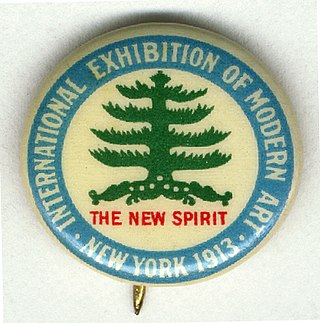
The 1913 Armory Show, also known as the International Exhibition of Modern Art, was a show organized by the Association of American Painters and Sculptors in 1913. It was the first large exhibition of modern art in America, as well as one of the many exhibitions that have been held in the vast spaces of U.S. National Guard armories.
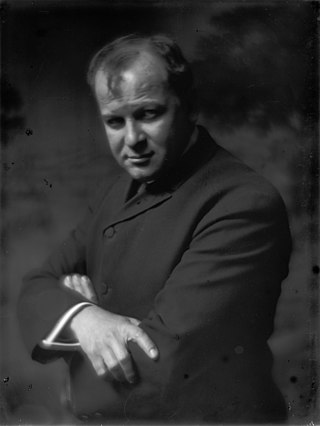
George Benjamin Luks was an American artist, identified with the aggressively realistic Ashcan School of American painting.
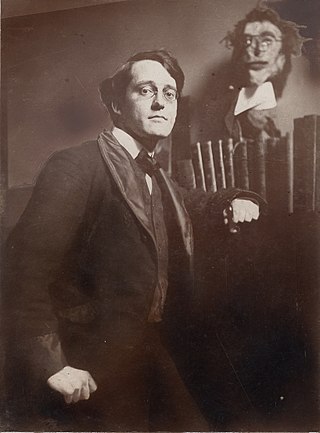
John French Sloan was an American painter and etcher. He is considered to be one of the founders of the Ashcan school of American art. He was also a member of the group known as The Eight. He is best known for his urban genre scenes and ability to capture the essence of neighborhood life in New York City, often observed through his Chelsea studio window. Sloan has been called the premier artist of the Ashcan School, and also a realist painter who embraced the principles of Socialism, though he himself disassociated his art from his politics.

The Ashcan School, also called the Ash Can School, was an artistic movement in the United States during the late 19th-early 20th century that produced works portraying scenes of daily life in New York, often in the city's poorer neighborhoods.
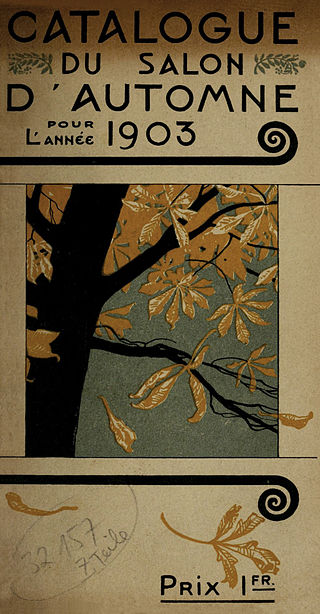
The Salon d'Automne, or Société du Salon d'automne, is an art exhibition held annually in Paris, France. Since 2011, it is held on the Champs-Élysées, between the Grand Palais and the Petit Palais, in mid-October. The first Salon d'Automne was created in 1903 by Frantz Jourdain, with Hector Guimard, George Desvallières, Eugène Carrière, Félix Vallotton, Édouard Vuillard, Eugène Chigot and Maison Jansen.
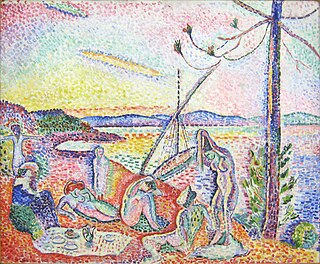
The Société des Artistes Indépendants or Salon des Indépendants was formed in Paris on 29 July 1884. The association began with the organization of massive exhibitions in Paris, choosing the slogan "sans jury ni récompense". Albert Dubois-Pillet, Odilon Redon, Georges Seurat and Paul Signac were among its founders. For the following three decades their annual exhibitions set the trends in art of the early 20th century, along with the Salon d'Automne. This is where artworks were often first displayed and widely discussed. World War I brought a closure to the salon, though the Artistes Indépendants remained active. Since 1920, the headquarters has been located in the vast basements of the Grand Palais.

Fountain is a readymade sculpture by Marcel Duchamp in 1917, consisting of a porcelain urinal signed "R. Mutt". In April 1917, an ordinary piece of plumbing chosen by Duchamp was submitted for an exhibition of the Society of Independent Artists, the inaugural exhibition by the Society to be staged at The Grand Central Palace in New York. When explaining the purpose of his readymade sculpture, Duchamp stated they are "everyday objects raised to the dignity of a work of art by the artist's act of choice." In Duchamp's presentation, the urinal's orientation was altered from its usual positioning. Fountain was not rejected by the committee, since Society rules stated that all works would be accepted from artists who paid the fee, but the work was never placed in the show area. Following that removal, Fountain was photographed at Alfred Stieglitz's studio, and the photo published in the Dada journal The Blind Man. The original has been lost.

Nude Descending a Staircase, No. 2 is a 1912 painting by Marcel Duchamp. The work is widely regarded as a Modernist classic and has become one of the most famous of its time. Before its first presentation at the 1912 Salon des Indépendants in Paris it was rejected by the Cubists as being too Futurist. It was then exhibited with the Cubists at Galeries Dalmau's Exposició d'Art Cubista, in Barcelona, 20 April–10 May 1912. The painting was subsequently shown, and ridiculed, at the 1913 Armory Show in New York City.

Société Anonyme, Inc. was an art organization founded in 1920 by Katherine Dreier, Man Ray and Marcel Duchamp. The society sponsored lectures, concerts, publications, and exhibitions of modern art, including the International Exhibition of Modern Art at the Brooklyn Museum in 1926. Between 1920 and 1940 they held 80 exhibitions showing mostly Cubist and abstract art. Their galleries in their "first modest headquarters" were at 19 East 47th Street.
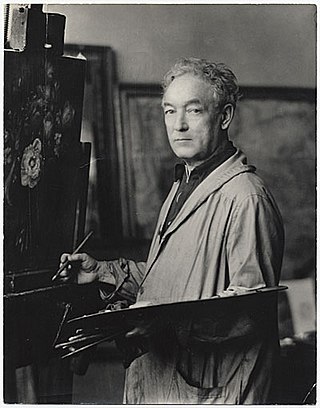
William James Glackens was an American realist painter and one of the founders of the Ashcan School, which rejected the formal boundaries of artistic beauty laid-down by the conservative National Academy of Design. He is also known for his work in helping Albert C. Barnes to acquire the European paintings that form the nucleus of the famed Barnes Foundation in Philadelphia. His dark-hued, vibrantly painted street scenes and depictions of daily life in pre-WW I New York and Paris first established his reputation as a major artist. His later work was brighter in tone and showed the strong influence of Renoir. During much of his career as a painter, Glackens also worked as an illustrator for newspapers and magazines in Philadelphia and New York City.
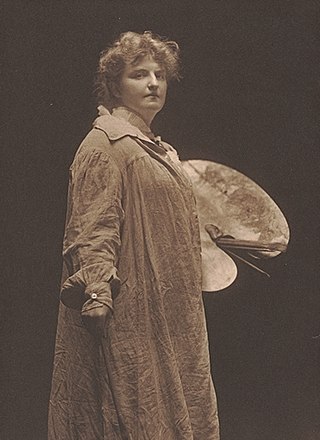
Katherine Sophie Dreier was an American artist, lecturer, patron of the arts, and social reformer. Dreier developed an interest in art at a young age and was afforded the opportunity of studying art in the United States and in Europe due to her parents' wealth and progressive attitudes. Her sister Dorothea, a Post-Impressionist painter traveled and studied with her in Europe. She was most influenced by modern art, particularly by her friend Marcel Duchamp, and due to her frustration with the poor reception that the works received, she became a supporter of other artists. She was co-founder of the Society of Independent Artists and the Société Anonyme, which had the first permanent collection of modern art, representing 175 artists and more than 800 works of art. The collection was donated to Yale University. Her works were exhibited in Europe and the United States, including the 1913 International Exhibition of Modern Art.
Charles Logasa was an artist.
Kraushaar Galleries is an art gallery in New York City founded in 1885 by Charles W. Kraushaar, who had previously been with the European art gallery, William Schaus, Sr.
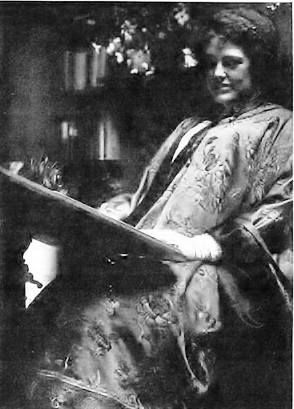
Mary (May) Wilson Watkins Preston was an American illustrator of books and magazines and an impressionist painter. She had an interest in art beginning in her teenage years, but her parents sent her to Oberlin College hoping that she would develop another interest. After three years, and at the urging of one of her teachers, Preston's parents allowed her to return to New York and attend the Art Students League. She then studied in Paris with James Whistler and next at the New York School of Art with William Merritt Chase.

The Société Normande de Peinture Moderne, also known as Société de Peinture Moderne, or alternatively, Normand Society of Modern Painting, was a collective of eminent painters, sculptors, poets, musicians and critics associated with Post-Impressionism, Fauvism, Cubism and Orphism. The Société Normande de la Peinture Moderne was a diverse collection of avant-garde artists; in part a subgrouping of the Cubist movement, evolving alongside the so-called Salon Cubist group, first independently then in tandem with the core group of Cubists that emerged at the Salon d'Automne and Salon des Indépendants between 1909 and 1911. Historically, the two groups merged in 1912, at the Section d'Or exhibition, but documents from the period prior to 1912 indicate the merging occurred earlier and in a more convoluted manner.

Juliette Roche (1884–1980), also known as Juliette Roche Gleizes, was a French painter and writer who associated with members of the Cubist and Dada movements. She was married to the artist Albert Gleizes.

Tulip Hysteria Co-ordinating is a fictitious work of art by Marcel Duchamp.
Edith Branson (1891–1976) was an American painter who was known for her use of color to convey emotions. Her mature work included stylized figures and natural subjects as well as complete abstractions. She was intensely committed to her craft but made little effort to show in commercial galleries or sell her paintings by other means. Although her work appeared mostly in extremely large group exhibitions, it was nonetheless frequently singled out for comment in the local press.
















